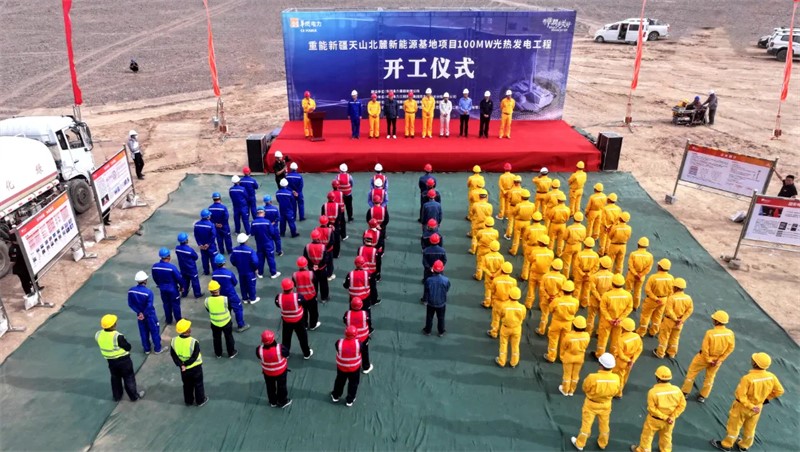On 15 August, the groundbreaking ceremony for the 100 MW CSP plant at Chongneng’s Xinjiang Tianshan North New Energy Base marked the first commercial deployment of the ultra-high-wind-speed heliostat developed by Dongfang Boiler Co., Ltd. (Dongfang Boiler), a governing member of the CSTA. The milestone also signals a decisive breakthrough in applying Chinese CSP technology under extreme high-wind conditions. The project launch simultaneously lays the technical and commercial groundwork for the subsequent large-scale rollout of Dongfang Boiler’s high-wind heliostats.

The northern foothills of the Tianshan Mountains boast abundant solar resources, yet their distinctive climate continually challenges engineers. In the Santanghu–Naomaohu zone, a representative high-wind area, the once-in-50-years maximum average wind speed reaches 33.4 m/s. Howling gales act as a stern examiner, imposing near-limit requirements on heliostat wind resistance. Building on experience from China’s first demonstration batch—namely the 50 MW Hami CSP plant in the windy region—Dongfang Boiler carried out an end-to-end “tailor-made” development: wind-tunnel tests for precise simulation, numerical modeling for meticulous calculation, and repeated on-site validation. The result is an ultra-high-wind-speed heliostat that operates stably in instantaneous winds of 24 m/s and remains undamaged in violent gusts up to 56 m/s, demonstrating exceptional wind-resistance performance. Once operational, the plant is expected to generate 220 GWh of clean electricity annually—equivalent to saving 64,000 t of standard coal and cutting roughly 175,700 t of CO₂ emissions each year—delivering a continuous “sun-powered” boost to national energy security and green development.

As China Resources Power’s first CSP project and the country’s inaugural “desert-wasteland-Gobi” renewable export base situated in an ultra-high-wind region, the plant is not only a key engine driving the national new-energy industrial upgrade but also a strategic lever for green growth in Xinjiang.


